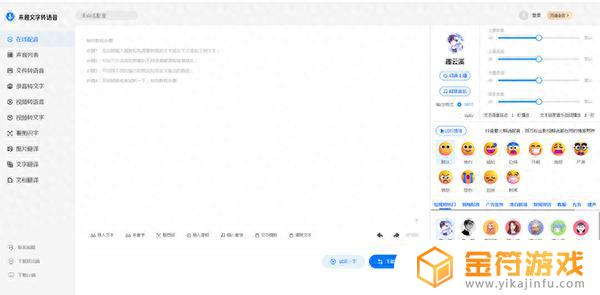抖音文本朗读怎么弄时长(抖音文本朗读怎么设置)
In recent years, text-to-speech (TTS) technology has advanced byleaps and bounds, allowing for the conversion of written text tospoken words with incredible accuracy, naturalness, andexpressiveness. TTS software is widely used in various industries,including education, entertainment, and media, to create audiocontent such as audiobooks, podcasts, news reports, and even movies.
One particular trend that has emerged in the entertainment andmedia industry is the use of TTS software to create funny videodubbing, where the spoken words are artificially generated andmismatched with the visual actions and expressions of the characters,resulting in a humorous and absurd effect. This technique has beenpopularized by social media platforms like TikTok, YouTube, andInstagram, where users can upload their own videos and use TTSsoftware to add different voices and accents to the characters.
However, one critical aspect of TTS software that affects thequality and impact of funny video dubbing is the duration control,which refers to the ability to adjust the length of the spoken wordsaccording to the timing and pace of the video. This feature isessential because it determines how well the spoken words match thevisual cues, such as lip movements, gestures, and reactions, and howwell they synchronize with the overall rhythm and mood of the video.
For example, if the TTS software generates speech that is too fastor too slow, the words may not fit the character's mouth movements orfacial expressions, making the dubbing look awkward and unrealistic.Similarly, if the TTS software generates speech that is too monotoneor robotic, the words may not convey the intended emotions or tone ofthe scene, making the dubbing sound flat and unengaging.
Therefore, it is crucial for users of TTS software to have goodcontrol over the duration of the generated speech and adjust itaccording to the specific needs and preferences of each video. Thiscan be achieved through various methods, such as manual editing,automated timing, or user-defined rules, depending on the complexityand flexibility of the TTS software.
Moreover, the impact of TTS duration control on funny videodubbing can be significant, as it can affect the comedic timing, thedelivery style, and the overall aesthetic quality of the dubbing. Forinstance, if the TTS software generates speech with a slight delay ora sudden stop, it can create a comedic pause or an awkward silencethat enhances the humor of the scene. Conversely, if the TTS softwaregenerates speech with perfect timing and intonation, it can create aseamless and convincing dubbing that blends well with the video'soriginal audio.
In conclusion, TTS duration control isan essential feature of TTS software, particularly in the context offunny video dubbing. Users of TTS software should learn how to usethis feature effectively and creatively to achieve the desiredcomedic effect and engage their audience with unique and entertainingcontent. With the continuous advancement of TTS technology and itsintegration with other multimedia tools, the possibilities of funnyvideo dubbing are endless, and the impact on the entertainment andmedia industry is remarkable.

文字转语音设置时长,今年影视解说在用搞笑视频配音软件,,配音现在是怎么运用的呢?可能大家并不知道。这里简单和大家分享一下,目前AI配音就是我们提到的情绪配音,通过AI处理,将文字生成有真人情感的语音,这里的有真人情感并不是说说而已,而是真的有很多情绪,听起来一点都不一样。
例如来趣文字转语音里的情绪配音,有高兴、伤心、害羞、愤怒等好多好多情绪,其中有些声音,抖音快手百万粉丝的解说大V都会使用。
以上就是抖音文本朗读怎么弄时长的全部内容,希望可以帮助到大家!
相关阅读
- 抖音文本朗读时常(抖音文本朗读怎么设置)
- 抖音文本朗读英文怎么说(抖音用英文怎么说)
- 抖音中如何添加朗读语音(抖音中如何添加朗读语音文字)
- 抖音的文字朗读为啥只能读一半(抖音的文字朗读为啥只能读一半呢)
- 抖音聊天怎么设置已读不显示(抖音聊天信息删了怎么找回)
- 抖音朗读文本只能读五秒怎么办(抖音朗读文本只能读五秒怎么办啊)
- 抖音发文字朗读怎么延长声音(抖音发文字朗读怎么延长声音呢)
- 抖音 播放 故事(抖音播放故事会侵权吗)
- 抖音朗读的声音放大(抖音朗读的声音放大怎么弄)
- 抖音文本朗读是谁(抖音文本朗读是谁的声音)
- 抖音增加管理员(抖音增加管理员怎么弄)
- 抖音手机直播背景如何换成自己的(抖音手机直播手游)
- 怎么把下载的电影片段发到抖音(怎么把下载的电影片段发到抖音上)
- 苹果平板mini4可以下载抖音吗(苹果mini4平板多少钱)
- 抖音热播电影虎牙(抖音热播电影虎牙怎么看)
- 抖音不帮手机号可以发作品吗
热门文章
猜您喜欢
最新手机软件
- 1
- 2
- 3
- 4
- 5
- 6
- 7
- 8
- 9
- 10



















